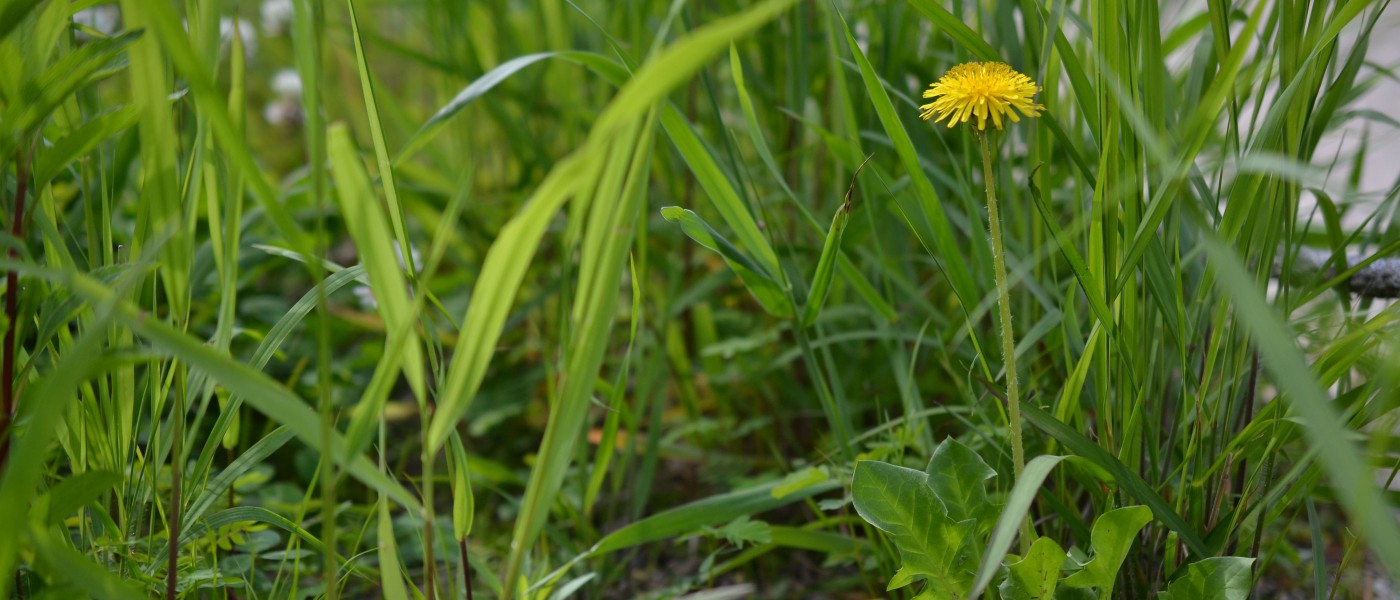Weed of the Month: Dandelion
Rued by gardeners the world over, the indomitable dandelion easily reigns as the most famous of all weedy plants. With its bright yellow flowers and puffball seed heads, the dandelion (Taraxacum officinale) is what comes to most people’s minds when you say “weed.” Native to temperate regions of Europe and Asia, dandelions can now be found on every continent except Antarctica. This hardy perennial was first introduced to North America in the 17th century by European settlers, who planted it in their kitchen gardens as a potherb and tonic.
Part of the reason for the dandelion’s international success is its adaptability. It can thrive in a wide range of elevations, soil types, and conditions. You’ll see dandelions growing just as happily in a dry sidewalk crack as in lush, well-watered lawns. It also reproduces incredibly well. Whenever a stiff breeze hits those feathery white seed heads, the seeds are carried far and wide—several hundred from each blossom! Not only that, the dandelion also has a stubborn taproot that readily regenerates from the slightest bit left in the soil. To get rid of this tenacious plant, be prepared to dig deep. Its root usually extends almost a foot or more below the surface—sometimes as far as 10 feet or more! Pinching off the flowers before they go to seed also helps keep them in check.
The name Taraxacum comes from my own native language, Persian, in which talkh chakok means bitter herb. The Latin specific epithet, officinale, denotes a plant with medicinal or culinary uses. Historically, dandelion has been used as a digestive aid, diuretic, and liver tonic. The leaves are rich in fiber, iron, and calcium, as well as vitamins A, C, and E. The parsnip-like roots can also be roasted and brewed to make a coffee substitute, and the flowers can be battered and fried (an easy win) or fermented to make wine. I’ve never tried dandelion wine, but since I’ve inherited a liking for bitter greens, I love a handful of young leaves in salad or as a base for soup. The common name comes from the French dent de lion, or lion’s tooth. Even without the flower, you can recognize a dandelion by its jagged toothlike leaves.
A pound of dandelion greens from the farmer’s market could set you back $7, a price that might tempt you to go foraging for bargain greens around your neighborhood. But remember that long and stubborn taproot? Not only does it draw up nutrients and water from deep in the soil, any pollutants that may be there will also be drawn up and absorbed into the plant, so stick to farm-grown.
So you see, despite their reputation as a nuisance, dandelions have much to offer: a smattering of bright color in even the bleakest of landscapes, a food source for hungry spring pollinators and humans alike, and of course, warm childhood memories of blowing puffballs. They are also comfortingly familiar—anyone can identify a dandelion. So let’s salute this super-interesting weedy plant!


